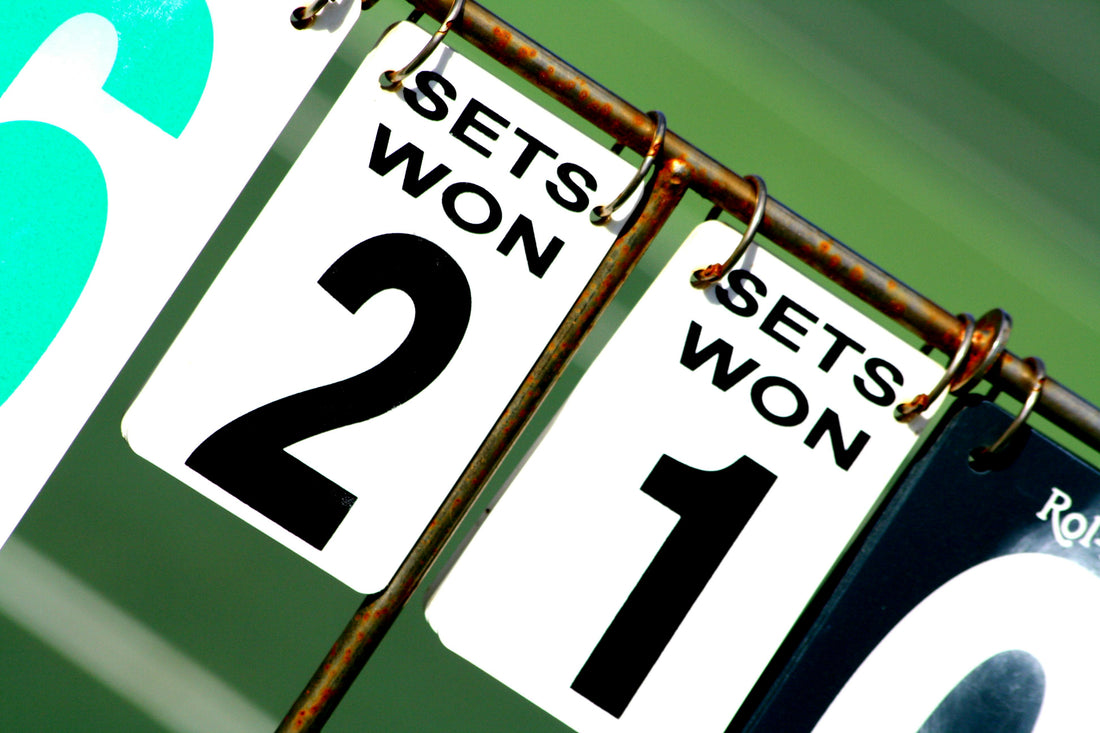
Tennis & Padel Scoring Explained: From Love to Tie-Breaks
Share
Whether you're smashing it on the tennis court or dominating the padel court, knowing the scoring system is key to staying on top of your game. While tennis and padel share a similar point system, each sport adds its own twist. Plus, we’ll show you how the Pt•Watch Scorekeeper can make tracking your score effortless and precise. Let’s dive in!
How Does Scoring Work?
Both tennis and padel use the same basic point system, which might sound confusing at first but is actually pretty simple once you get the hang of it! Here's the breakdown:
- Points in a Game: Points progress as 0 (love), 15, 30, 40, and then game. Win four points (with at least a two-point lead), and you take the game.
- Deuce and Advantage: If the score is tied at 40-40 (deuce), a player needs to win two consecutive points to win the game. The first point gives you advantage, and if you win the next point, you win the game. If you lose the advantage point, the score returns to deuce.
Pro Tip: Keep track of every point easily with the Pt•Watch Scorekeeper—a must-have for any serious player who doesn’t want to miss a beat!
When Is a Set Over?
A set is typically won by the first player or team to win 6 games, but here’s the catch—they must win by at least 2 games. For example:
- 6-4 or 6-3 wins the set.
- If the score reaches 5-5, players continue until one side leads by 2 games (e.g., 7-5).
- If the score reaches 6-6, a tie-break decides the set.
The Golden Point Rule in Padel: Optional but Popular!
One of the main scoring twists in padel is the Golden Point rule, but here’s the catch—it’s optional, not mandatory!
In padel, when the score reaches deuce (40-40), some tournaments and casual matches may use the Golden Point rule to keep matches fast and exciting. Instead of playing advantage, the next point decides the game—no extra back-and-forth. The receiving pair gets to choose which side they want to receive from, adding strategy and pressure!
However, some players and tournaments stick to the traditional tennis-style advantage rule. It all depends on the match setup or tournament rules.
Why the Golden Point? It speeds up matches and keeps players and fans on the edge of their seats, perfect for tournaments or tight schedules.
Tie-Break Explained: The Set Decider
In both tennis and padel, when the set score reaches 6-6, a tie-break is played to decide the set winner:
- Players play points using regular scoring (1, 2, 3, etc.).
- The first to reach 7 points, with at least a 2-point lead, wins the set.
- If the tie-break reaches 6-6, play continues until one player leads by 2 points.
In tennis, some major tournaments use different tie-break formats (like a 10-point tie-break in the final set), but padel typically sticks with the classic 7-point tie-break.
Tracking scores during these nail-biting tie-break moments is easy with the Pt•Watch Scorekeeper—keeping you in control of the match at all times!
What’s with the ‘Love’ Score?
You’ve probably heard someone say, “The score is 30-love,” and wondered, “Why love?”
The most popular theory is that “love” comes from the French word “l’œuf,” meaning “egg”—symbolizing zero, much like the shape of an egg. Another fun theory suggests it represents the idea of playing for the love of the game—how poetic!
So next time you hear love, remember—it’s all part of the game’s rich history!
Why 15, 30, 40? A Historical Quirk
Why this odd progression? It dates back to medieval France. One theory suggests it’s based on the face of a clock—15, 30, 45, and 60 (game point). Over time, 45 was shortened to 40 for simplicity and clarity when calling the score.
A quirky system, but it adds character to the sport!
Padel vs. Tennis: Any Other Scoring Differences?
Padel mirrors tennis scoring closely, with two key differences:
- Golden Point (Optional): As mentioned, some padel matches use the Golden Point at deuce, while others use the traditional advantage rule. Always check the tournament rules or agree on the format before the match.
- Match Format: Padel matches are typically best of 3 sets, while tennis matches may be best of 3 or 5 sets, depending on the event.
Regardless of the format, the Pt•Watch Scorekeeper ensures you never lose track of your score—whether you're playing tennis or padel!
Alternative Scoring Systems
To speed up matches or add variety, some casual games and tournaments may use alternative systems:
- No-Ad Scoring (Tennis): Skip the advantage. After deuce, the next point wins the game—keeping matches quick and intense.
- Fast4 Format (Tennis): Sets played to 4 games instead of 6—perfect for tight schedules or quick tournaments.
Padel tournaments generally stick to the standard format, but feel free to mix it up during casual games!
Final Thoughts: Score Like a Pro!
Both tennis and padel bring unique strategies and excitement with their scoring systems. Whether it’s the tension of a tie-break or the quick thrill of a Golden Point, every point matters!
To keep your score precise and your focus sharp, the Pt•Watch Scorekeeper is your ultimate match companion—making score tracking effortless, so you can focus on playing your best.
Now that you're armed with scoring knowledge, go out there and crush your next match—score by score!
